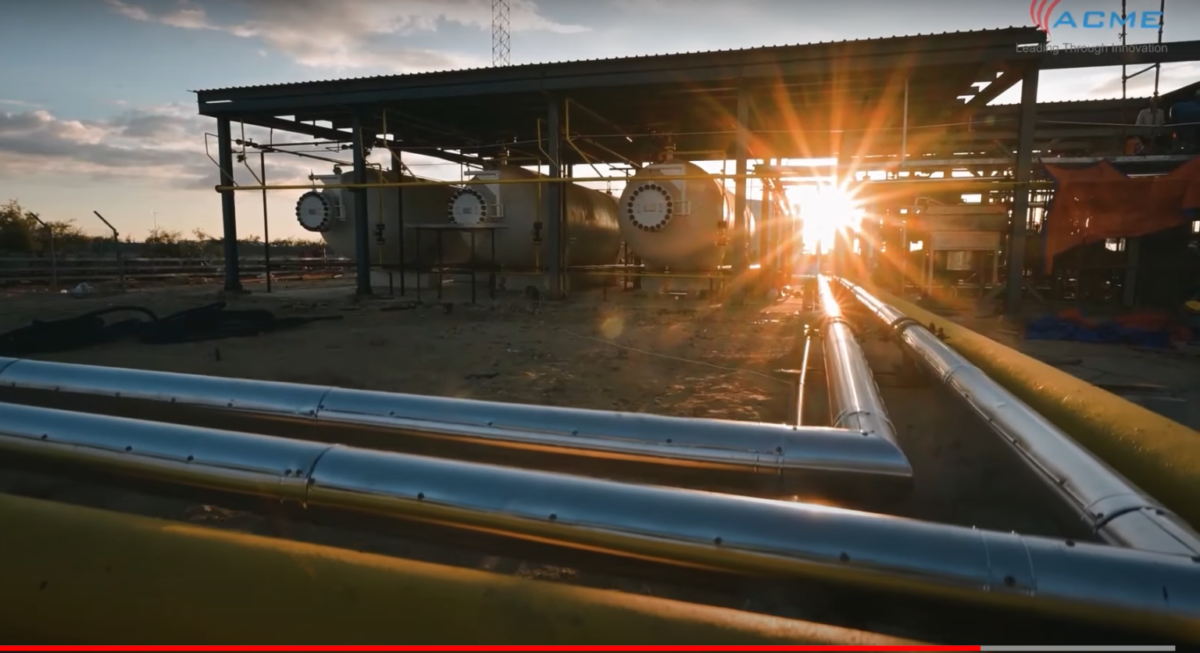https://www.pv-magazine-australia.com/2022/07/07/squadron-begins-work-on-3-billion-queensland-wind-and-solar-hub/

The Clarke Creek project includes a solar farm of up to 400 MW.
Image: RWE
Iron ore billionaire Andrew Forrest’s private company Squadron Energy has marked the start of construction on the $3 billion Clarke Creek renewable energy precinct with a ground-breaking ceremony at the site of what it has described as Australia’s largest grid-connected renewable energy project.
The Clarke Creek project comprises an 800 MW wind farm, up to 400 MW of solar installations, and a battery energy storage facility of an as yet unspecified size although there have been reports Squadron is looking at installing up to 2 GWh of battery storage at the site.
The project, being developed across 76,300 hectares about 150 kilometres north-west of Rockhampton in Central Queensland, will be delivered in two stages. Stage one, which is now under construction, will comprise 100 wind turbines that will produce about 450 MW of clean energy by 2025.
Squadron has already signed a supply deal with Queensland government-owned energy generator Stanwell Corporation for most of the output of the first stage of the project. Stanwell has inked a 346.5MW Power Purchase Agreement as part of a 15-year commitment to the project.
Stage two of the Clarke Creek project will include the remainder of the wind generation capacity and an expected 400 MW solar farm teamed with a grid-scale battery energy storage system.
Squadron said when complete, the precinct could produce enough wind, solar and battery energy to power more than 660,000 homes equivalent to approximately 40% of Queensland households and will export lower cost electricity directly into the National Electricity Market (NEM).

Image: Squadron Energy
The start of construction on the project comes just days after the Australian Energy Market Operator (AEMO) outlined its vision for the next 30 years of the NEM, including the massive investment required to transition from fossil fuels to firmed renewables.
AEMO’s current forecasts show a nine-fold expansion of wind and solar farm capacity is needed by 2050 to meet the nation’s net-zero emissions targets.
Forrest said the Clarke Creek project, which he described as the “largest renewable energy precinct in the southern hemisphere”, will be crucial in delivering on that demand.
“We will deliver affordable energy for Australian families and industry without destroying the environment like carbon emitting fuels do,” he said.
“When fully operational, Clarke Creek will displace enormous amounts of carbon each year by harnessing the renewable energy of the wind and sun to power our homes and commercial premises, providing cheaper energy without the hidden costs associated with coal-fired power stations.”

Image: Squadron Energy
Forrest said Clarke Creek’s grid-scale generation capability is expected to displace 2.7 million tonnes of carbon each year and aligns with the Queensland government’s integrated energy plan for the state.
“We are investing in Clarke Creek not only to harness the renewable power of the wind and sun to energise our homes, our factories and our cities, but as a critical step towards breaking our reliance on fossil fuels,” he said.
Squadron Energy chairman John Hartman said the Clarke Creek precinct, with its combination of solar, wind and battery technologies, is just the sort of project AEMO is targeting as the shift to renewables accelerates.
Hartman said the project has an excellent combination of strong and predominantly night-time wind energy generation to complement Queensland solar production.
“There is currently a large supply gap in wind generation in order to meet 2030 projections due to the electrification of industry and transport, and we believe large energy hubs like Clarke Creek, which leverage multiple technologies and storage to deliver firmed power, are a crucial solution,” he said.
Squadron expects stage one of the project will create about 350 construction jobs and inject more than $100 million into the local economy.
This content is protected by copyright and may not be reused. If you want to cooperate with us and would like to reuse some of our content, please contact: editors@pv-magazine.com.
<




